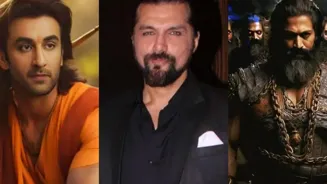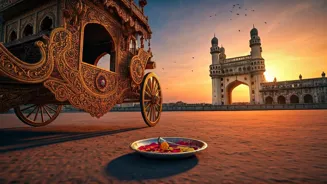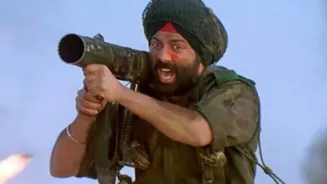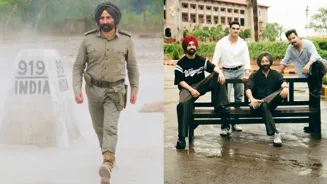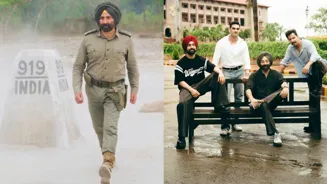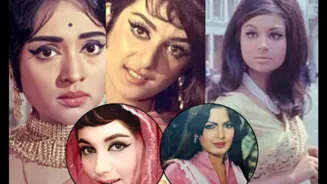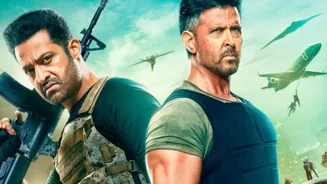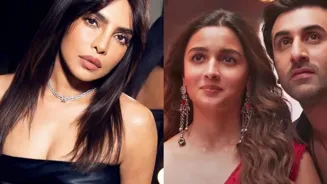Nitesh Tiwari’s ambitious two-part epic Ramayana is shaping up to be more than just a film—it’s fast becoming the most expensive cinematic venture in Indian history, with a staggering budget that reportedly
exceeds ₹4,000 crore. After the recent unveiling of its first look, buzz around the magnum opus has gone global—and industry insiders are weighing in on its unprecedented scale, star power, and VFX marvels.
Trade analyst Komal Nahata recently addressed speculation around the film’s budget on Faridoon Shahryar’s podcast. “I don’t know if it’s ₹4,000 crore. I asked the same to Namit [Malhotra, co-producer], and he was visibly hurt that I asked that question. He said, ‘I’m not here to calculate the budget. I want to make Ramayana part 1 and 2 out of shiddat [passion],’” Nahata recalled.
Malhotra, the force behind global VFX powerhouse Prime Focus (and its Hollywood wing DNEG), had earlier opened up on the project during a conversation with Prakhar Gupta. “So, when we set out to make it, six, seven years ago, just after the pandemic, when we started to really get serious about mounting it and producing it, and budget-wise, it was like everybody thought I’m a lunatic. Because no Indian film, by a long distance, comes close to it. So, to put it simply, it’ll be about $500 million by the time we’re done, on both films put together, part one and part two, which is over ₹4,000 crore,” Malhotra stated.
What’s driving this mammoth investment?
According to Nahata, Malhotra’s mission is not merely commercial. “He claimed it doesn’t matter if he invests even 3x the budget as long as he can show the world that India is capable of telling such stories and making such films. Malhotra told me he doesn’t even know where the money is coming from, but he’s just pumping it in to secure a historical finished product.”
Nahata further emphasized the cultural weight of the material: “Ramayana and Mahabharata are the best stories ever. Every story is based on the Ramayana or the Mahabharata in some way or the other. This is the story of the Ramayana itself. How they’re making it will shake the world and cinema buffs.”
A major reason for the film’s ambitious scale is DNEG’s involvement—known for delivering Oscar-winning VFX in blockbusters like Inception, Interstellar, Blade Runner 2049, and Dune. Nahata credited the company’s pedigree for raising expectations globally: “Now, Namit Malhotra’s company will deliver the vision and the means, the money. Namit has it. So, what was lacking, he’s got into Ramayana. Therefore, why will it not succeed?”
He added, “When I asked Namit why Indian films are being talked about like this when it’s the Indians who are doing all the graphics, he said because we don’t have the budget and vision of Hollywood, but otherwise we’re capable of delivering.”
Malhotra, according to Nahata, is not a passive producer. “He’s such an involved producer! He says he’s not producing to write cheques or coordinate dates. That’s not his job. All that will be done by his assistants and employees. His job is to be involved in the making of the film not as the captain of the ship, but as a creative producer.”
Among Malhotra’s boldest moves is a plan to release Ramayana in 30 to 50 languages, both Indian and international, using AI-powered voice localization. “That’s his vision, that’s his plan. So I think it’s just waiting to explode on the screens of the world, not just of India or of the traditional overseas markets. Maybe he’ll throw open an entire new world to Hindi films,” Nahata explained.
Director Nitesh Tiwari too, received high praise. “He has poise, a super sharp brain, and immense clarity of thought,” said Nahata. Ranbir Kapoor, who plays Rama, was described as “sincere,” “dedicated,” and “one of the best actors of the current times,” with Nahata assuring, “He will deliver his 2,000%.”
The cast includes Sai Pallavi as Sita, Sunny Deol as Hanuman, and Yash (also a co-producer) as Ravana. The music is in the hands of global legends AR Rahman and Hans Zimmer, further adding to its cinematic heft.
Ramayana Part 1 and Part 2 are scheduled for Diwali 2026 and Diwali 2027 releases respectively. And if Malhotra and Tiwari’s vision holds, this won’t just be a film—it’ll be a benchmark for Indian cinema on the world stage.


